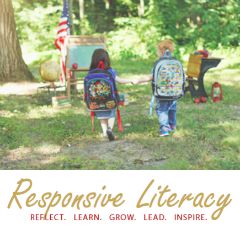A week ago, third grade started their Influential People unit with this activity, where we put objects in boxes to represent the impact Dr. King, Abraham Lincoln, Cesar Chavez, Dian Fossey, and Kid President have had on the world. Watch the video for a recap, or check out my previous blog post here.
Then, this week, a box "arrived" for me in our school office.
I knew immediately it was from Kathy Ross.
17 or so years ago, when I started in my district, Kathy was assigned to be my mentor. She has been a consistent source of help, friendship, self-reflection, positivity, and light ever since. She sees the good in everything, and always reminds me to remember what is important in life. Family first. :)
When I opened the box, as our other boxes for influential people had, it was filled with glimpses of my own life. My family, my dog, my heritage, my interests. LEGOs and chocolate, a picture of my dear Snoopy, Star Wars mac and cheese, my Hiawatha family, and a compliment to my creativity. A card filled with kind words put me over the edge, and tears fell. I brushed them away, and went back to doing my job after a quick call to her classroom, but I was suddenly filled with a gratitude that I'm sure made a positive impact on my coaching conversations for the rest of the day. Honestly, it changed my perspective on a few things I had been struggling with and helped me move on.
A few days later, I opened the box again to take these pictures. You see, Kathy's birthday is today, so I figured I would honor her with a blog post that celebrates her thoughtfulness. So, I took a closer look at the objects in the box, and noticed the quotes on the outside of the box.
Those quotes were just beautiful. She knows me so well.
She knew I would appreciate them.
Then I turned the box again.
That's when it occurred to me that the quote was my own.
How does someone else know me so well that she remembers my words, and I don't? I actually had to go to my phone and look for a Word Swag to see if the words really were mine.
Sometimes, life gets so busy that we forget to pay attention to the things that are important to us. We are so busy keeping up with the world, that we forget that keeping up is not living. And sometimes, when just keeping up, we start to lose sight of our own purpose. But, magically, a box arrives with the things that matter to you, and you have clarity again. You remember what matters in life. And, you remember it because someone who cares about you chose kindness, and chooses to spread it.
Kindness is something that we do not always make time for in this busy world. Somehow, Kathy always finds that time. People like her are a wonderful reminder of the impact that we have on each other, and the difference we can make in the way others see the world.
A few weeks ago was Random Act of Kindness Day, so in honor of Kathy's birthday and all the nice things she does for others, I challenge you to do something kind for someone randomly this week. It can be a small gesture, or a thoughtful card, or something sentimental for a special person in your life. But, I challenge you to stop and do something kind for someone else, just because.
Happy Birthday, Kathy!!!





























































